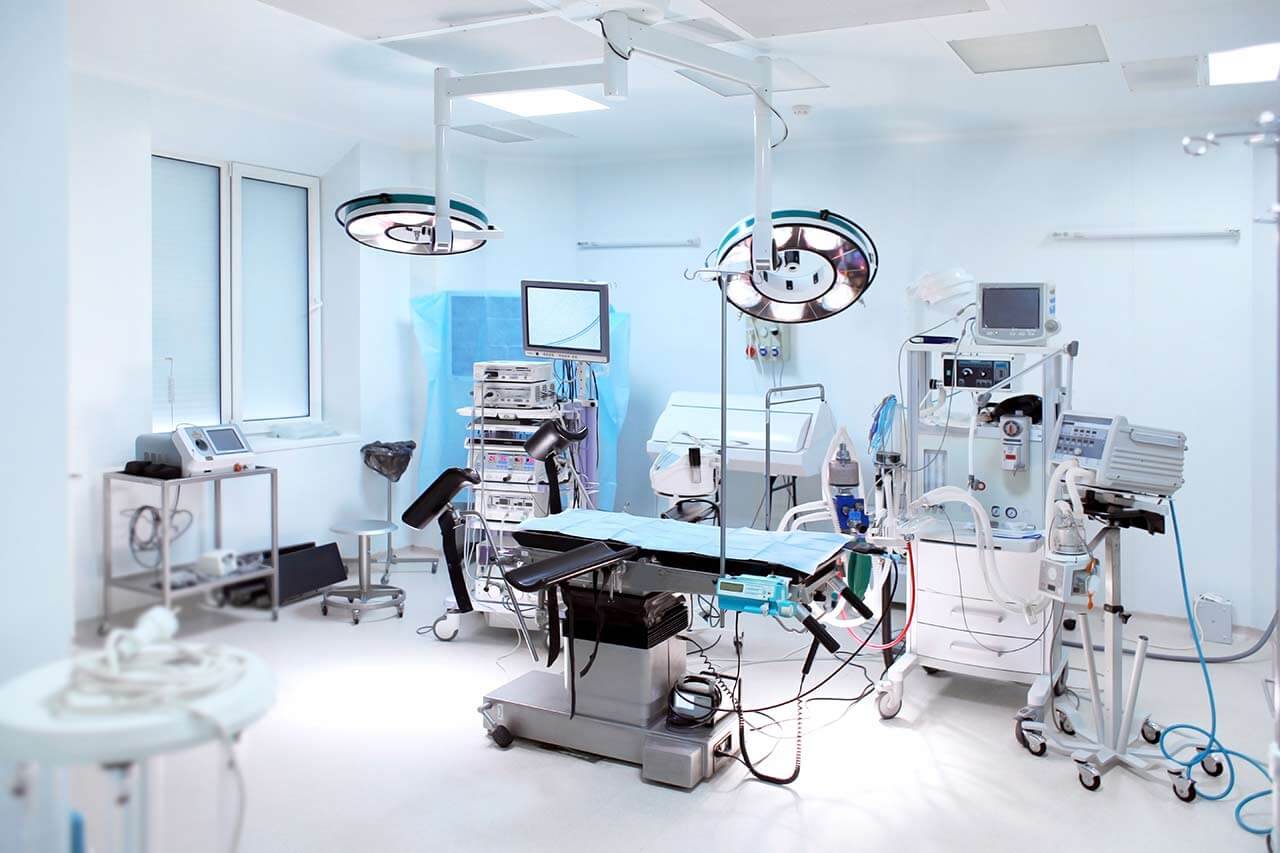
About the Department of Adult and Pediatric Diagnostic, Interventional Radiology at University Hospital Würzburg
The Department of Adult and Pediatric Diagnostic, Interventional Radiology at the University Hospital Würzburg offers the full range of modern diagnostic and therapeutic procedures in this field. For this purpose, it has advanced medical equipment: magnetic resonance imaging (MRI), multispiral computed tomography (CT), duplex sonography and digital X-ray, fluoroscopy, etc. In the field of interventional radiology, the focus is on the treatment of vascular diseases, for example, the doctors of the department conduct special measures for dilating the vessels in peripheral arterial occlusive disease and closing the vessels in complicated bleedings. Also, the range of services in this field is complemented by the installation of drainage and port systems, punctures, and special percutaneous methods for tumor treatment. The Chief Physician of the department is Prof. Dr. med. Thorsten Bley, who has many years of clinical experience and regularly demonstrates high rates of successful treatment results.
A feature of the department is the Section of Experimental Radiology, which serves to conduct research on innovative procedures to improve diagnostic and therapeutic methods. Thanks to this, the department is able to offer patients unique techniques that are not available in other clinics.
The department also specializes in the modern imaging diagnostics in children and adolescents. All studies are conducted by specially trained doctors, on medical equipment adapted to the children's body and working with a minimal radiation dose. There are performed about 3,000 X-ray examinations, 9,000 ultrasound examinations, 2,000 MRI and 250 CT scans every year. All diagnostic procedures are performed in strict accordance with international standards of pediatric radiological diagnostics.
In October 2012, the department installed a new, modern "large-scale" MRI scanner, which, in addition to the full range of standard images, allows making full-body images, cardiographic studies, spectroscopy and diffusion images. MRI scans of the skull and spine are performed in collaboration with experienced neuroradiologists.
The goal of the medical team is to obtain all the necessary information about the child’s state of health using methods with minimal irradiation or without it. For example, the department applies the very latest ultrasound systems, harmonic imaging, contrast agents (for example, to diagnose reflux disease), ultrasound elastography. The advanced X-ray machines provide excellent image quality and minimal use of X-rays.
The diagnostic options of the department include:
- All types of ultrasound examinations, including high-resolution ultrasound, contrast-enhanced ultrasound
- Ultrasound diagnosis of the abdominal organs, intestines, kidneys and blood vessels
- Contrast-enhanced ultrasound of the liver and other organs
- Ultrasound-guided puncture (for example, puncture of the liver, kidneys, spleen, pancreas, lymph nodes, etc.)
- Preoperative lymph node labeling
- Computed tomography (CT), including contrast-enhanced dynamic CT
- Magnetic resonance imaging (MRI), also contrast-enhanced one
- Classic X-ray studies
- Fluoroscopy
- Mammography (breast diagnosis)
- Pediatric imaging diagnostics
- Ultrasound examinations of various organs
- Classic X-ray studies
- Computed tomography (CT)
- Magnetic resonance imaging (MRI)
- Other diagnostic services
The department offers the following methods of interventional radiology:
- Catheter procedures for the treatment of vascular stenosis and occlusion in the pelvis, lower limbs, kidneys – balloon dilation of the vessels or stenting (for example, percutaneous transluminal angioplasty)
- Treatment of acute ischemia of the lower extremities using local intra-arterial lysis at the stage of compensated ischemia (stage I and IIa) and surgical recanalization at the stage of uncompensated ischemia (stage IIb and III), removal of a blood clot by catheter aspiration
- Arterial embolization in acute arterial bleedings
- Minimally invasive treatment (stenting) of aortic ruptures, aortic aneurysms and aortic dissection
- Radiofrequency ablation for the treatment of liver cancer and liver metastases (usually ultrasound- or CT-guided)
- Transarterial chemoembolization (TACE) for liver cancer treatment
- Selective internal radiation therapy (SIRT) for the treatment of liver cancer, liver metastases in colorectal cancer, breast cancer and neuroendocrine tumors
- Transjugular intrahepatic portosystemic shunting (TIPS) for the treatment of portal hypertension
- Other therapeutic services
Photo of the doctor: (c) Universitätsklinikum Würzburg





